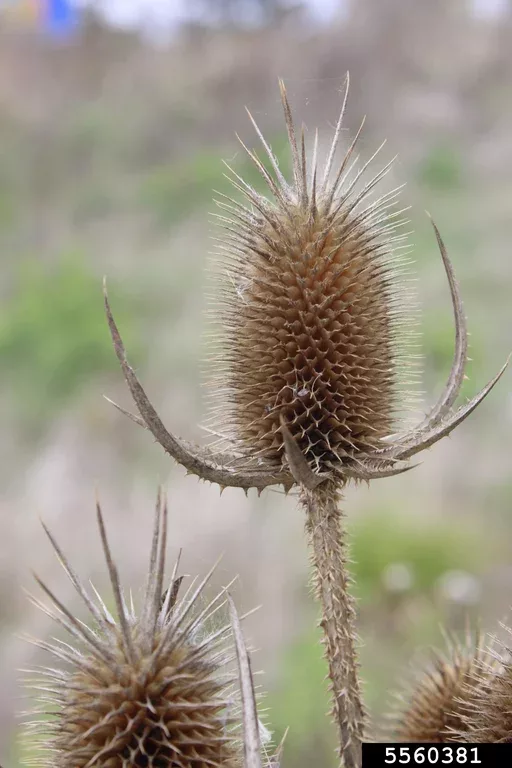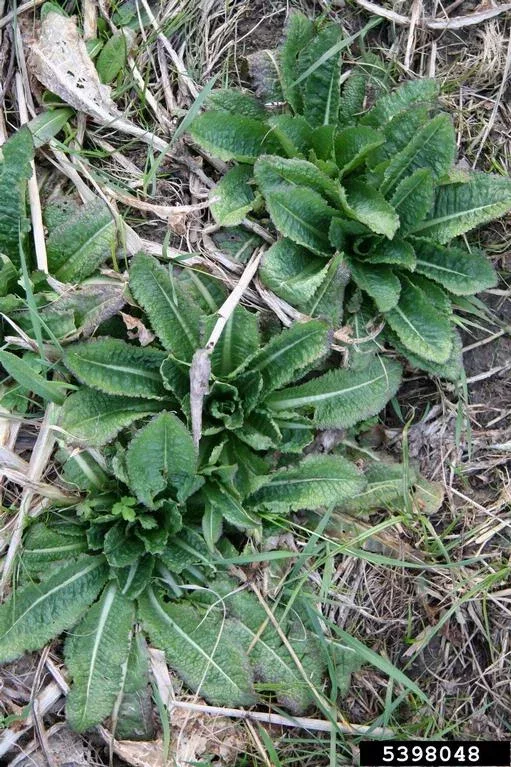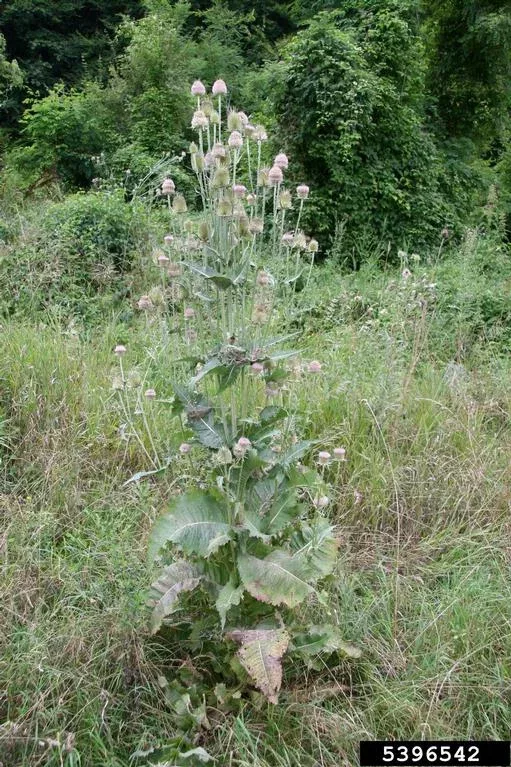
Dipsacus laciniatus is a monocarpic perennial plant that grows as a basal rosette for at least a year until sending up a flowering stalk that can reach 6-7 ft. (1.8-2.1 m) in height. The plant dies after flowering.
The Cut-leaf Teasel is often found in open habitats such as roadsides, prairies, savannas, or meadows. It is easily spread due to the production of abundant seeds.
This perennial plant grows as a basal rosette, then has a tall flower stalk (can reach up to 6-7 feet tall). This species have opposite leaves at the base that are long and pinnately lobed, coarsely toothed, and ciliate. The tall flower stalk are often covered in white prickles with opposite smaller basal leaves at intervals along the stalk.


Foliage
Opposite leaves are joined at the base and form cups that surround the prickly stem.
Flowers
The small, white flowers densely cover oval flower heads and are present from July to September. Spiny bracts are located on the ends of flower stems.
Fruit
A single plant can produce up to 2,000 seeds and can remain viable in the soil for at least two years.
Flowers are present from July – September. Each stalk ends with a cylindrical flower head. At the
base of this flower head, there are several bracts that stick out. There are individual flowers densely packed together on the flower head.

